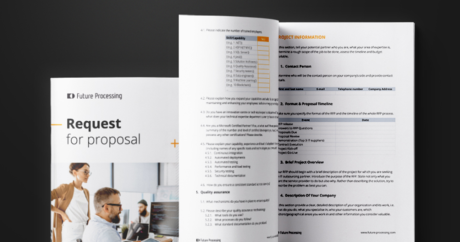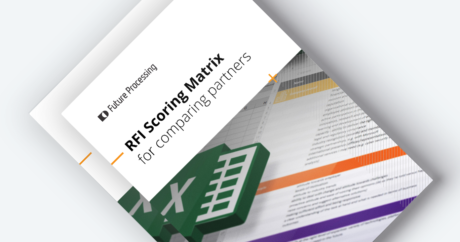A software requirements specification (also referred to as a software development specification or a system/project requirements specification) is a document that describes the software you want your technology partner to develop for you. Usually, a software development specification document is drafted either when choosing a supplier – if you’d like a number of potential suppliers to provide detailed quotes – or once you’ve selected your desired supplier and signed an IT outsourcing contract with them.
What is a Software Requirement Specification (SRS document)?
You may choose to prepare the document on your own or get professionals to help you do. it. Some IT companies, including Future Processing, provide assistance in preparing software requirements specification documents and other technical documents through dedicated workshops.
It is worth mentioning that a software development requirements specification document serves as a prelude to further discussions about the system or application to be developed, rather than to describe the final version of the software. Very often specifications are tweaked throughout projects.
A software requirements specification allows you to present your idea and needs in a well-structured manner which can be later shared with the development team to enhance the common understanding of the software to be developed.
Why use a Software Requirement Specification Document?
A Software Requirement Specification document is important as it provides a clear and concise description of the software’s functional and non-functional requirements, ensuring everyone has a shared understanding of what the software is expected to achieve. It provides a detailed breakdown, making it easier to estimate the effort, time, and cost required to complete the project. It also serves as a guideline for developers to follow during the software development process.
Because of all those aspects, software requirements specification document is a critical document that helps ensure the success of a software development project by providing a clear, comprehensive, and agreed-upon description of what the software is supposed to accomplish. It facilitates effective communication, project management, quality assurance, and risk management throughout the software development lifecycle.
What should a Software Development Requirements Specification contain?
A software requirements specification should provide a detailed picture of the software to be developed including its goals, full description, functional and non-functional requirements and project glossary. Other important sections include technical requirements, implementation requirements, system features and information about the users, as well as testing requirements, quality assurance standards, performance metrics, training and support and maintenance and upgrades.
Requirements specification documents will vary depending on whether you are asking your supplier to develop an existing piece of software or to create software from scratch.
A deep dive into Software Requirements Specification: benefits and best practices
Benefits of software requirements specification document include a better understanding of the project and better efficiency when it comes to work. It also allows to provide an accurate estimation and quality assurance and it facilitates evaluating the impact of requested changes and making informed decisions regarding changes during development.
It also acts as a reference in contractual agreements, helping to resolve disputes and ensuring legal compliance.
When creating as SRS document it worth remembering about the following best practices:
- involvement of key stakeholders, including clients, end-users, developers, testers, and project managers, to gather and validate requirements,
- using clear and consistent language,
- organising the SRS in a logical and easily navigable structure,
- detailing all requirements and prioritising them,
- keeping it updated,
- maintaining good documentation practices: using a glossary to define terms etc.
How to write a Software Requirements Specification (SRS)?
A requirements specification in software engineering is usually directed at developers or their technical managers. It should therefore contain highly detailed technical information while still being clear enough for business users who would eventually accept and use the software. A good software development requirements specification should be clear, unambiguous, correct and as complete as possible at the moment of its creation.
When writing a SRS document, it is worth starting from the basics and being as clear and precise throughout as possible. It is good to include as much detail as possible – even if it means you repeat yourself. The level of detail covered by your specification, will determine the ability of your potential supplier to provide more or less accurate estimations of software project time and cost.
Writing a software requirement specification can be a daunting task and there are many things to remember, many issues to consider and much information to cover, organise and communicate. To help you answer the question of how to write a software development requirements specification document, we created a pack of two editable, Word document requirements specification templates which you can simply download and complete for any supplier you choose to work with.
Software development specification template: a pack of two editable documents
If you need to create a software requirements specification document, download our pack of 2 templates which have been designed for those of you who:
- need a requirements specification template for new software development, or
- need a requirements specification document for existing software – for example if you need to upgrade or replace an existing solution.
These two software development specification templates include must-have areas important for development of new software or for upgrading or replacing existing software. To use them, simply download the pack by completing the form above, edit your chosen requirements specification template, add any additional sections you need and send it off to your chosen IT services company.
We wish you good luck with your software project!
You can read more about software development here:


